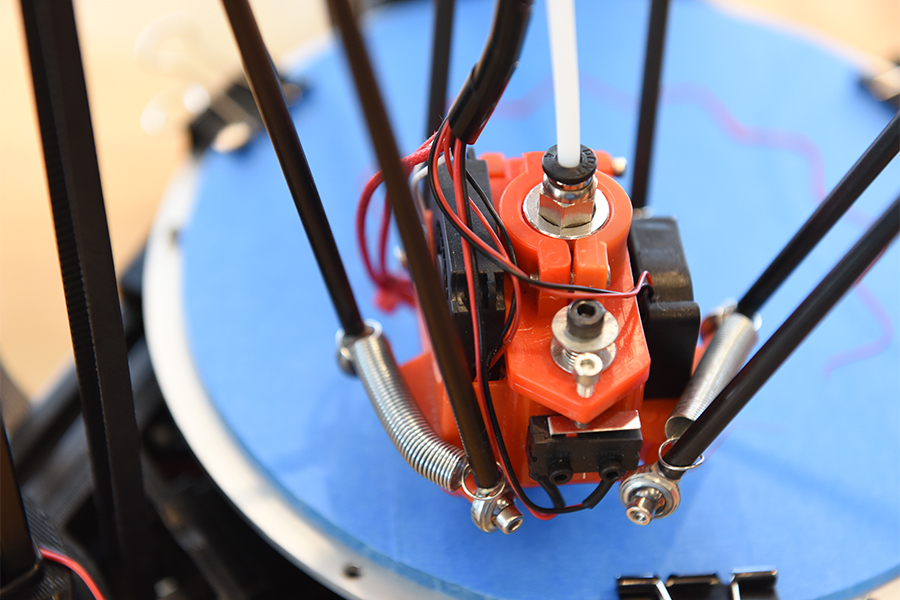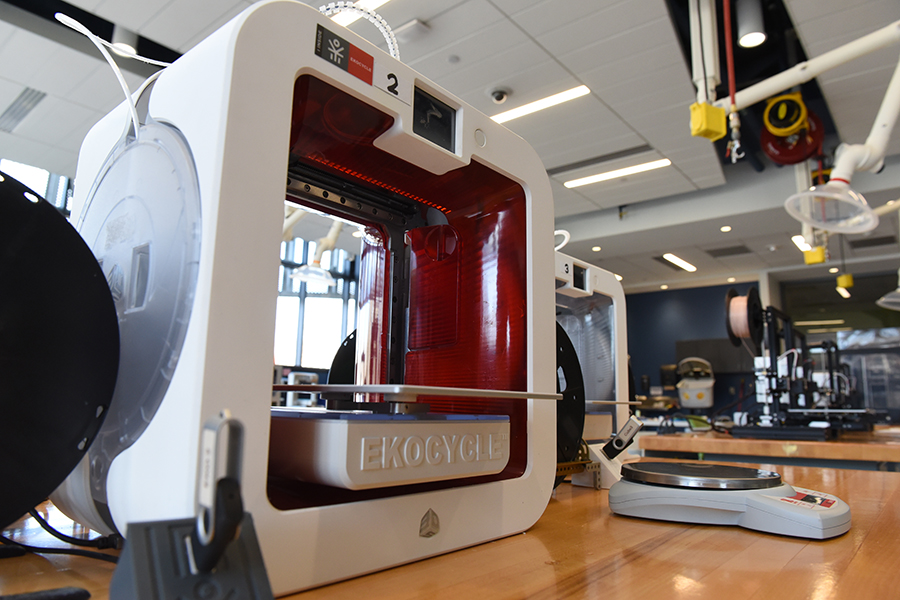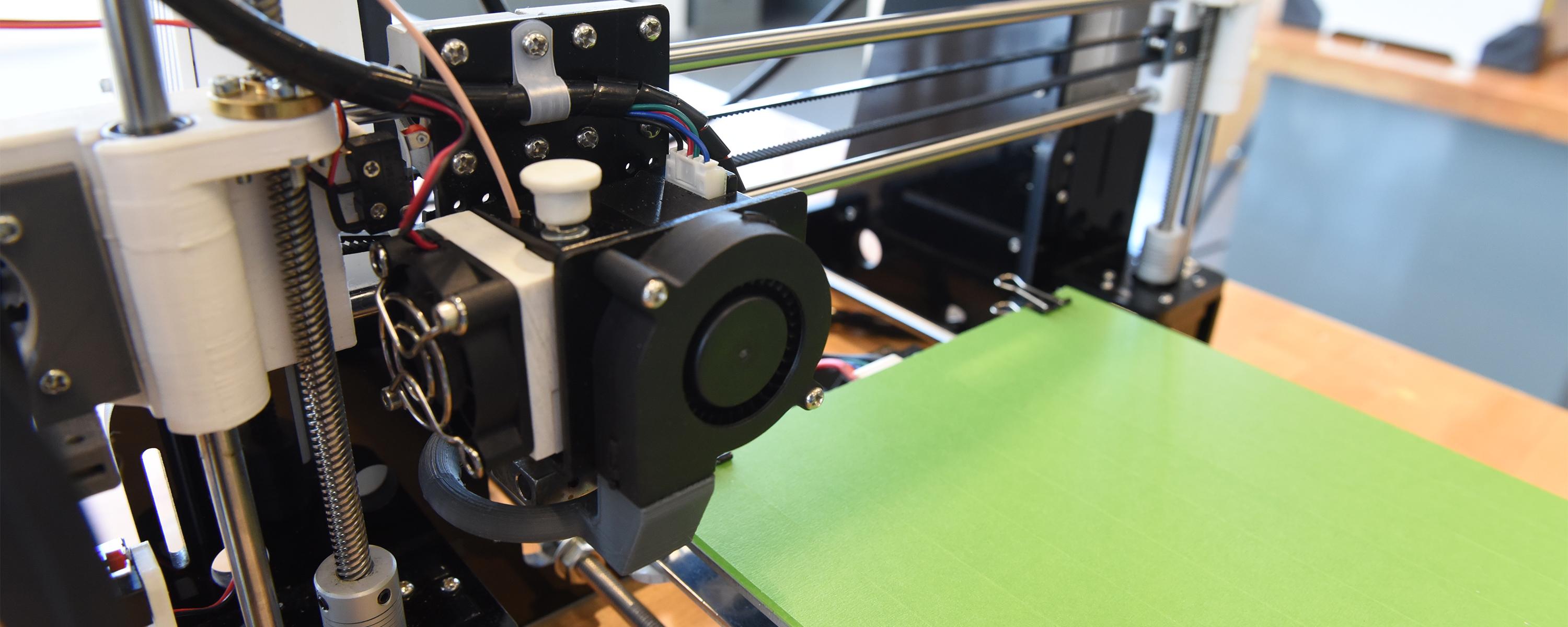One of many 3D printers at SUNY Poly.
The additive manufacturing lab has extensive capabilities through the use of open-source printers, proprietary printers as well as specialty printers. Students and additive manufacturing training often progresses through the use of the open-source printers and specifically the development and use of CAD drawings and their translation into effective print files yielding a successful 3D build. If projects demand more complex print materials or design and finishing specifications, proprietary and specialty 3D printers are utilized.
3D Printer FAQS:
Open-source 3D printers include:
- Creality Ender 3/3 Pro
- Creality Ender 5 Plus
- Bibo Dual Touch
- FLSUN Delta
| Printer | Printing Technique | Materials | Benefits | Uses |
| Open-Source | FDM | PLA, ABS, PETG, PC, POM, Blends (Wood-fill, Metal-fill) | Highly customizable settings |
|
- Cubepro
- Cube 3
- Raise3D Pro 2
| Printer | Printing Technique | Materials | Benefits | Uses |
| Proprietary | FDM | PLA, ABS | Easy to use | Common printing requests |
- Markforged Mark Two
- Objet 3000 Prime
- Stratasys Dimension 1200es
- Formlabs Form 3
- BIOX
| Printer | Printing Technique | Materials | Benefits | Uses |
| Specialty printers | ||||
|
Markforged |
FDM - Composite |
Polymer: Nylon, Onyx;
|
Robust, high-strength parts | Capstone and company requests. Prints in need of strength or durability |
| Objet 3000 Prime | Polyjet | Resin: MED610, Clear | High detail | Larger, high detailed parts |
| Stratasys Dimension 1200es | FDM - Dual Extrusion | ABS+ w/ Soluble Support | High dimensional accuracy | Dimensionally accurate components with complex geometry |
| Form 3 | SLA | Resin: Clear | High dimensional accuracy | Research; small, highly accurate components |
| BIOX | Gel | Gel: Cellink, GelMA | Biocompatibility | Research, biocompatible requests |

3D printer located inside the Additive Manufacturing Lab.



